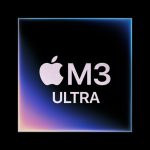Screen recording technology has become indispensable in many areas, including education, corporate training, and digital content creation. High-quality screen recordings help improve understanding and retention, as well as critical instructional design components.
Studies show that visual aids like screen recordings can increase memory retention by up to 65%. This guide will provide you with eight crucial tips that will assist you in creating professional-grade screen recordings. In it, you’ll learn how to use an online screen recorder to record anything effectively and professionally.
“The key to a successful screen recording is thorough preparation and attention to technical details.”
1. Create a detailed content plan
Begin with a solid storyboard outlining your key points and actions. Split your content into digestible chunks, each segment focusing on a specific task or concept. Content planning helps prevent rambling and ensures a logical flow throughout your recording. Taking time to structure your content beforehand significantly reduces editing time and improves the overall quality of your final product.
A well-structured content plan should detail each section’s sequence of actions, timing, and specific technical requirements. Consider the complexity of your subject matter and your audience’s familiarity when determining how detailed your explanations need to be. Your plan should also account for natural transition points where viewers can pause and process information.
2. Set up an optimal recording environment
The physical environment where you record significantly impacts the audio quality and your ability to maintain focus. Beyond basic noise control, consider factors like air conditioning systems, computer fan noise, and even the acoustics of your room. Hard surfaces can create unwanted echo effects that detract from audio quality.
Recording environment checklist:
- Select a quiet room away from external noise
- Close windows to minimize background sounds
- Turn off phones and notifications
- Position yourself away from noisy appliances
- Use sound-dampening materials if necessary
- Control room temperature to reduce fan noise
- Ensure proper ventilation for equipment cooling
3. Configure professional audio setup
Audio quality often matters more than video quality in screen recordings. Poor audio can make even the most visually polished content unwatchable. Beyond choosing the right microphone, understanding proper microphone placement and audio processing can dramatically improve your recordings. Consider the distance between you and the microphone, the angle at which you speak into it, and the room’s acoustic properties.
4. Optimize video settings
Screen recording quality depends heavily on your display settings and recording software configuration. Your recording software should be configured to capture at the highest possible quality while maintaining smooth performance. Understanding basic concepts like bit rate, codec selection, and color depth will help you achieve optimal quality.
Video configuration priorities:
- Match recording resolution to the intended playback platform
- Select the appropriate codec for the content type
- Configure bit-rate based on content complexity
- Set proper color depth for clear text display
- Enable hardware acceleration when available
- Optimize capture area for content visibility
5. Prepare your screen for professional recording
Screen preparation goes beyond simply clearing your desktop. Consider how information will be presented and organized throughout your recording session. The goal is to create a distraction-free environment that keeps viewers focused on the relevant content. Think about window arrangements, browser tab organization, and how you’ll navigate between different applications during recording.
6. Master presentation techniques
Your presentation style significantly impacts viewer engagement and understanding. Speaking pace should be slightly slower than conversational speech, with clear pronunciation and purposeful pauses. Additionally, consider how your mouse movements and keyboard inputs appear to viewers. Smooth, deliberate actions help viewers follow along more quickly.
Recording pace guidelines:
- Maintain consistent speaking rhythm
- Allow time for complex information processing
- Use purposeful pauses for emphasis
- Coordinate speech with visual elements
- Signal transitions between topics clearly
- Match explanation speed to action complexity
7. Incorporate engagement elements
Engagement goes beyond basic visual aids and personal connection. Understanding when and how to use different engagement techniques can significantly impact viewer retention and comprehension. Visual emphasis tools should guide attention without becoming distracting. Your webcam appearance should feel natural and purposeful rather than forced or unnecessary.
8. Perfect your post-production process
Post-production isn’t just about fixing mistakes – it’s about enhancing the viewing experience. Understanding basic editing principles helps you make decisions during recording that will simplify the editing process. Focus on maintaining smooth pacing and clear information flow throughout your content.
Quality optimization checklist:
- Verify audio consistency across sections
- Check transition timing and flow
- Ensure text readability at various playback sizes
- Confirm proper rendering of all visual elements
- Test playback on different devices and platforms
- Validate export settings for intended distribution
Conclusion
Creating professional screen recordings requires careful attention to these eight fundamental aspects. Each element builds upon the others to create a polished final product. The key to success lies in understanding how these different aspects interact and influence each other. Remember that the goal isn’t perfection but creating clear, engaging content that effectively communicates your message.
Quality screen recording is an iterative process that improves with practice and feedback. As you develop your recording style, you’ll discover which techniques work best for your content and audience. Stay focused on delivering value to your viewers while maintaining professional standards across all technical aspects of your recording.





















